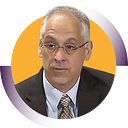Do Time Horizons Mean The Same As They Used To?
The timing of future scenarios is something I wrote about back in 2017. In that post, I explored the influencers of timing, namely obstacles and accelerants. These markers drive the foresight required to understand the path of possible futures and some indicator of timing. However, timing is therefore dictated by several factors with many unknowns. The pace, complexity, and uncertainty of our world makes timing extremely difficult to understand. That begs the question: should we think about timing the same way? I often hear the following: I don’t want to focus on something that is ten years out. My response is always the same: how do you know it is only ten years out?
The pace of scientific and technological breakthroughs is staggering. If we factor in accelerants from other domains, the pace of innovation is likely to speed up. For example, societal shifts will require solutions. These shifts serve as catalysts that accelerate innovation. For instance, society in many portions of the world is aging, while at the same time, we are having fewer children. Who will care for the elderly? Expect care robots to accelerate as a result. Another clear example was the pandemic. An unforeseen extreme event that served both as accelerant and obstacle. This convergence across domains in my opinion is the key driver of timing — and also brings the highest level of uncertainty. Perhaps an example of obstacles that slow down innovation was articulated in this recent article. The author focused on the inherent problems with electric vehicles, identifying obstacles that could undermine the long-term vision.
EVs are new and exciting, but they are also raw, and they have a host of issues with few good solutions. I really want EVs to work but unless these problems are solved they are not going to be a viable solution for the future.
Grant Piper — The Inherent Problems With EVs That No One Wants To Talk About
In the article, the author lists the following obstacles:
- Lithium mining and its impact on the environment
- Battery replacement cycles and the cost to replace a battery
- Outdated electrical infrastructure
- Battery fires
- Battery disposal
- Electricity fuel sources
Viewed through today’s lens, those are indeed obstacles and may slow down the pace of electric vehicle advancement. These obstacles could undermine accelerants like Government subsidies and vehicle manufacturers stated commitment to move to fully electric fleets. How does one assess timing? Yes, this is an example of a scenario that we know is further out — but plans are being made today in the context of electric vehicles that can be completely altered by these obstacles. The other lens is that of innovation acceleration. Almost every day I see more progress made in battery innovation. Does a renewed focus on nuclear energy address the electricity fuel source issue? Does a true aggressive focus on an energy Internet resolve the outdated infrastructure issue? These are obviously open questions.
Each of these uncertainties brings us back to the question: should we think about timing the same way? I believe it is less about whether something is ten years out and more about what does that look like and how do I get there? What steps will I take today to thrive in the world of 2033? This approach called backcasting is a planning method that starts with defining a desirable future and then works backwards to identify policies and programs that will connect that specified future to the present. It is not a one-time process but a continuous scanning that looks for signals. These signals contain within them a view of obstacles and accelerants. This continuous process drives a strategic process that looks very different than our traditional approach. Adaptive strategy is fit for our times, where resilience is a big driver of success.
Originally published at http://frankdiana.net on March 14, 2023.
